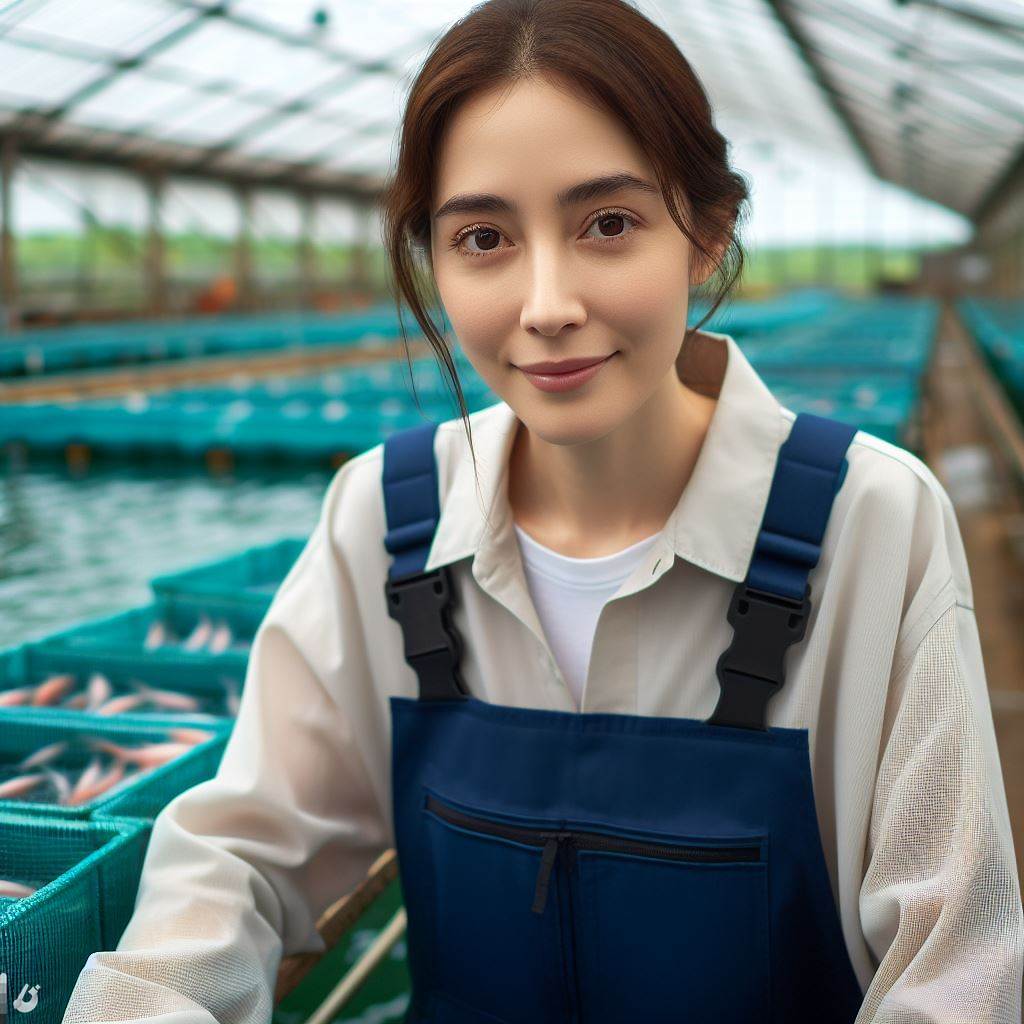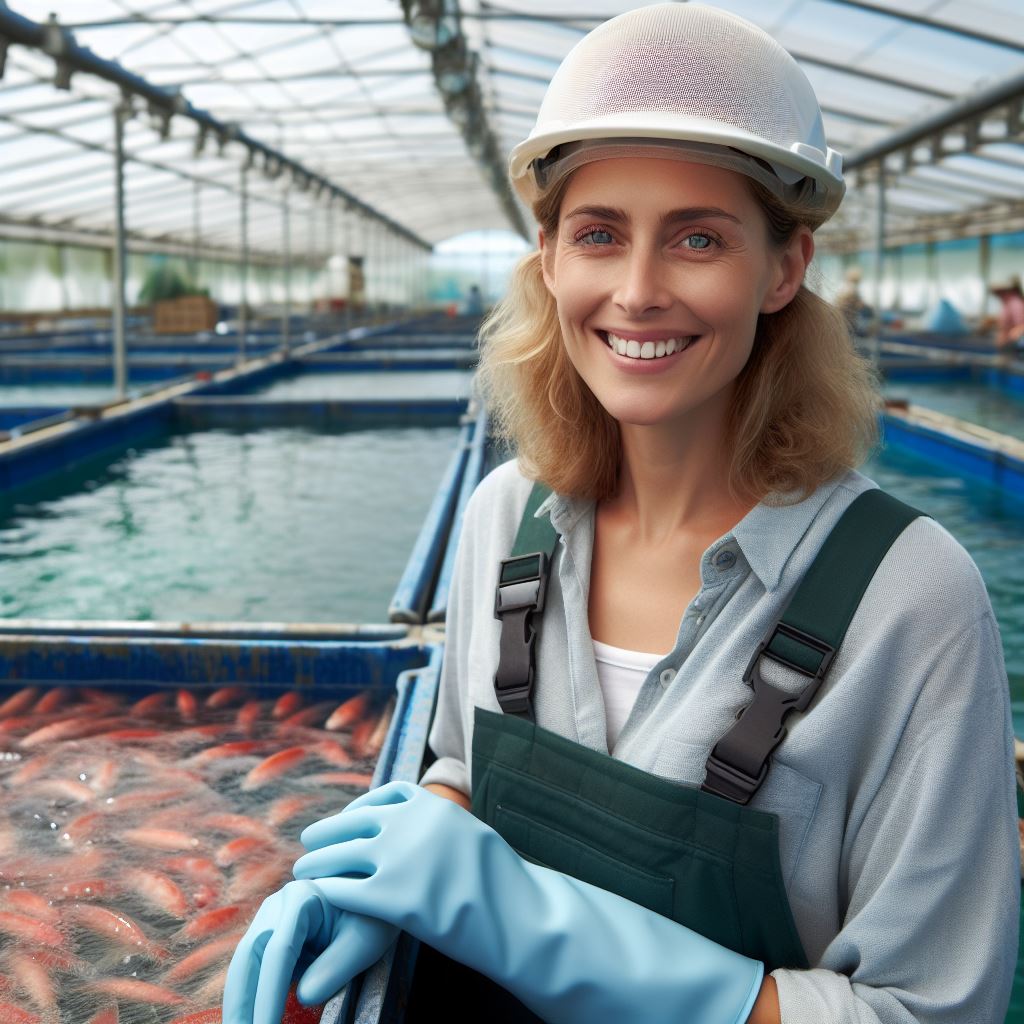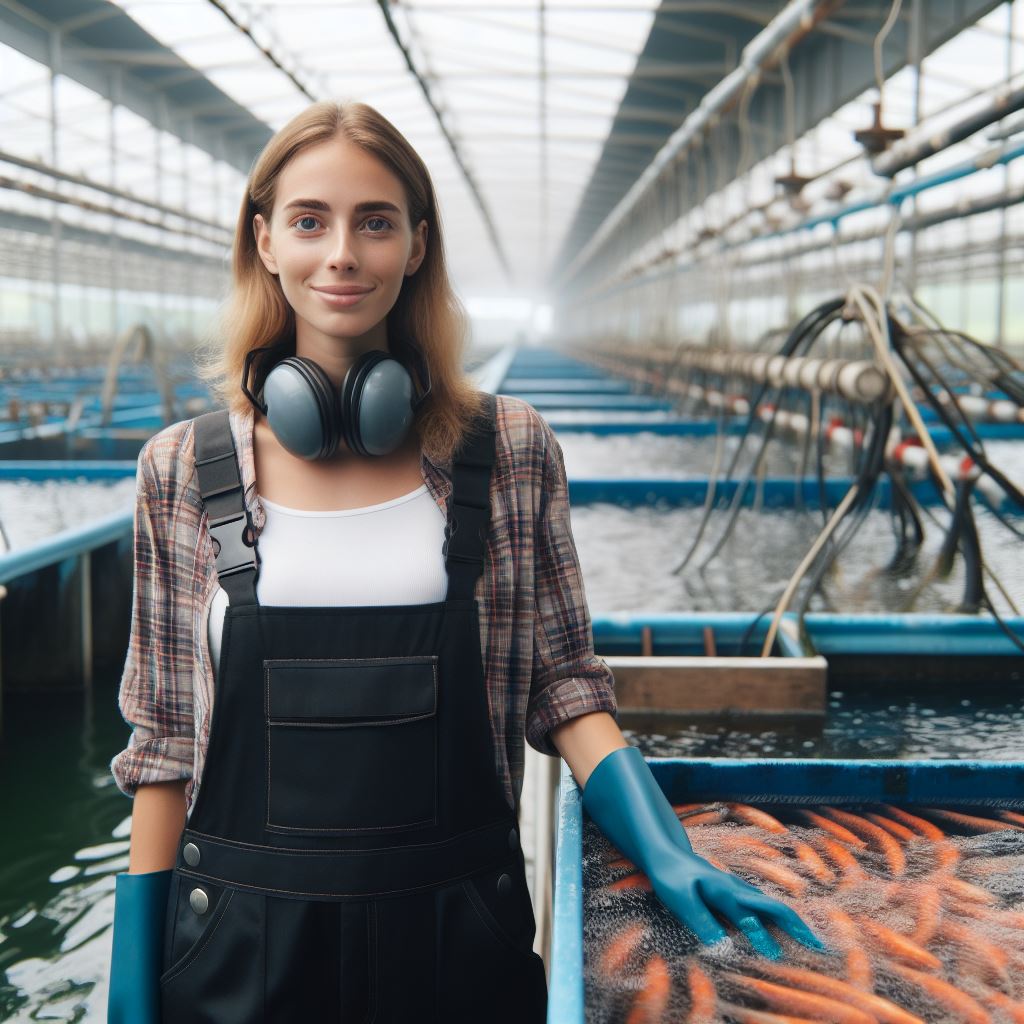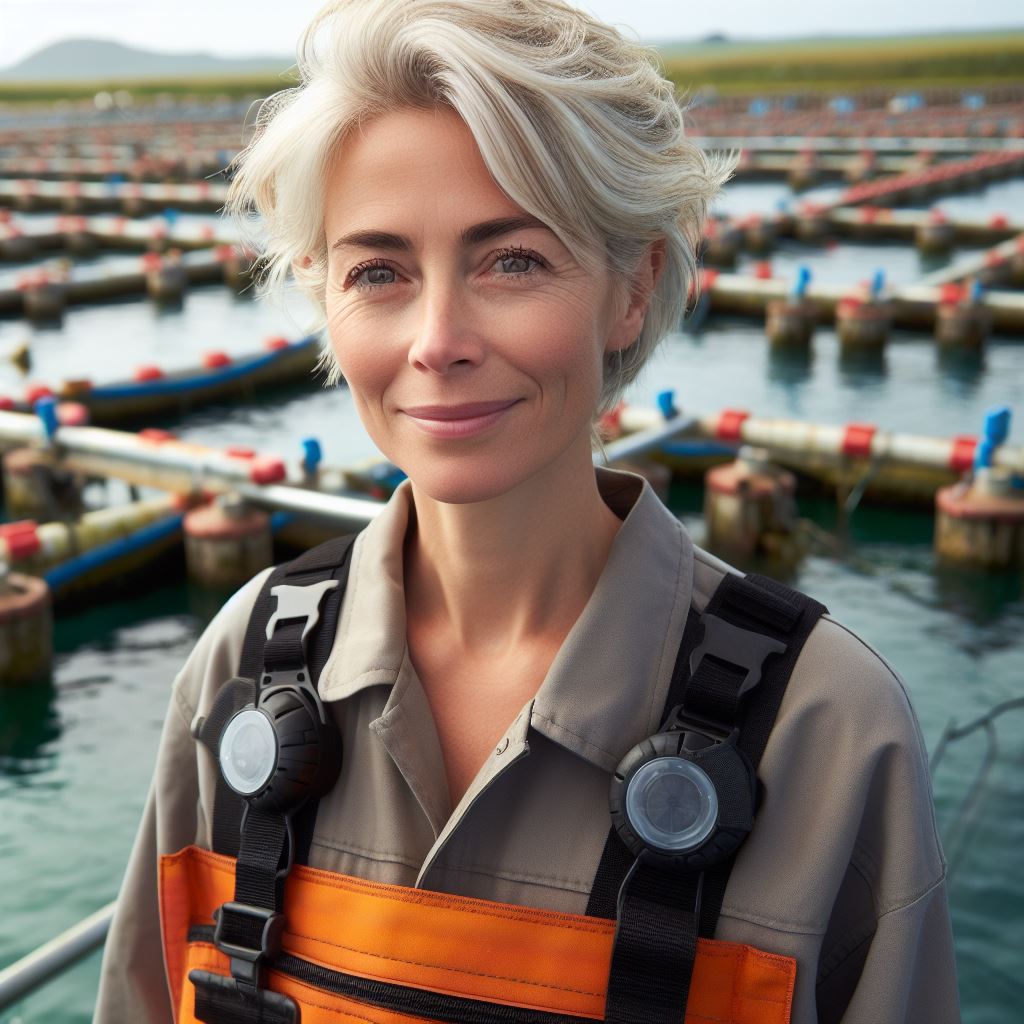Introduction
Aquaculture Innovation Unveiled
Aquaculture innovation in the UK is reshaping the industry landscape. Genetic breeding, precision aquaculture, and AI integration are steering this transformative journey.
Significance of Aquaculture in the UK
In the heart of the UK’s economy, aquaculture plays a pivotal role. It not only addresses the rising demand for seafood but also fosters economic growth and job creation.
Purpose Unveiled
This blog post delves into the dynamic realm of aquaculture innovation in the UK.
Explore how genetic techniques, precision practices, and artificial intelligence are revolutionizing the country’s aquaculture sector.
In this section, we’ll unravel the intricacies of these technological trends, showcasing their potential impact on sustainability, productivity, and the overall success of the UK aquaculture industry.
Join us on a journey through the cutting-edge developments that promise to shape the future of aquaculture in the United Kingdom.
Overview of Aquaculture in the UK
The aquaculture industry in the UK
- Aquaculture in the UK is the farming of aquatic organisms like fish, crustaceans, and mollusks.
- It is an important sector that contributes to food security and provides employment opportunities.
- The UK has a long history of aquaculture, with various types of fish and shellfish being cultivated.
- Salmon and trout are the most commonly farmed fish, while oysters, mussels, and scallops are popular shellfish.
- Overall, the industry plays a critical role in meeting the increasing demand for seafood.
Aquaculture in the economy and food production
- Aquaculture significantly contributes to the UK’s economy and food production.
- It generates revenue, creates jobs, and enhances food security by reducing reliance on imports.
- Through aquaculture, the UK can produce high-quality seafood locally, reducing the carbon footprint associated with transportation.
- Furthermore, aquaculture supports coastal communities and promotes sustainable development in rural areas.
The challenges and opportunities faced by the industry
- Despite its importance, the aquaculture industry in the UK faces several challenges.
- One major challenge is the concern for environmental sustainability, as intensive farming practices can negatively impact water quality and ecosystems.
- Disease outbreaks and parasites also pose a threat to farmed fish, requiring regular monitoring and mitigation measures.
Regulatory frameworks and licensing processes can be complex and time-consuming, hindering industry growth and innovation.
Access to suitable land or water for aquaculture operations is another challenge, given competing demands and limited resources.
However, the aquaculture industry also presents opportunities for innovation and growth. Technological advancements enable improved monitoring, feed management, and disease prevention in fish farms.
Research is underway to develop sustainable feed alternatives, reducing reliance on wild fish stocks.
Moreover, the industry can expand further by diversifying species cultured and exploring new markets.
Collaboration between industry, government, and academia is crucial to address the challenges and harness the opportunities.
Investments in research and development, as well as sustainable practices, can ensure the long-term viability of the aquaculture industry in the UK.
In essence, aquaculture is a significant industry in the UK, contributing to the economy, food production, and job creation.
While it faces challenges related to sustainability and regulation, the industry has ample opportunities for growth and innovation.
By adopting technological advancements and fostering collaboration, the UK’s aquaculture sector can thrive and provide sustainable seafood for the nation.
Read: Top 5 Challenges for UK Aquaculture Techs
Personalized UK Career Consulting
Receive tailored career guidance designed just for you. Get actionable steps and expert support to boost your career in 1-3 days. Take control of your career now.
Get StartedTechnological Advancements in Aquaculture
The Role of Technology in Driving Innovation in Aquaculture
Technology plays a crucial role in driving innovation and advancement in the aquaculture industry.
With the increasing global demand for seafood, the traditional methods of fish farming are no longer sufficient to meet the needs of the population.
Therefore, the industry has turned to technology to increase efficiency, productivity, and sustainability in aquaculture operations.
Examples of Technological Advancements
1. Use of Automation and Robotics
One key technological advancement in aquaculture is the use of automation and robotics.
Automated systems can perform tasks such as feeding, monitoring water quality, and cleaning, reducing the need for manual labor and improving overall efficiency.
Robots are also used to handle delicate procedures like grading and sorting fish.
2. Application of IoT (Internet of Things) in Fish Farming
The integration of IoT in fish farming has revolutionized the industry.
IoT devices such as sensors and smart cameras can monitor and collect data on various parameters like oxygen levels, temperature, and fish behavior.
This data is then analyzed to make informed decisions regarding feed management, disease prevention, and water quality.
3. Remote Monitoring Systems
Remote monitoring systems have been implemented in the UK aquaculture sector to enable real-time monitoring and control of fish farms.
These systems use sensors and cameras to provide constant surveillance and allow farmers to remotely monitor and adjust vital parameters such as oxygen levels, feed distribution, and water flow.
This technology reduces the need for constant physical presence and allows for quick responses to any issues that may arise.
Enhance Productivity, Efficiency, and Sustainability
1. Improved Water Quality Monitoring
Technological advancements in aquaculture have greatly improved water quality monitoring.
IoT devices and sensors can continuously monitor water parameters, ensuring optimal conditions for fish growth and health.
Your Dream Job Starts with a Perfect CV
Get a tailored CV and cover letter that captures your unique strengths and stands out in your industry. Let us help you make an unforgettable first impression.
Get StartedThis leads to higher productivity and reduces the risk of fish mortality due to poor water quality.
2. Enhanced Feed Management
Automation and IoT technologies have enhanced feed management practices. IoT devices can collect data on fish feeding behavior, allowing farmers to optimize feeding schedules and portion sizes.
This leads to better feed conversion rates, reduced waste, and improved growth rates, ultimately increasing efficiency and lowering costs.
3. Disease Prevention and Control
Advanced technologies have significantly improved disease prevention and control in aquaculture.
Real-time monitoring systems can detect early signs of disease outbreaks, enabling prompt intervention measures.
Automated systems can also administer medication and vaccines, reducing the reliance on antibiotics.
This not only enhances fish health and welfare but also ensures the production of safe and sustainable seafood.
Lastly, technology has become a driving force behind innovation in the UK aquaculture sector.
Through the use of automation, robotics, IoT, and remote monitoring systems, aquaculture operations have become more productive, efficient, and sustainable.
These advancements revolutionized fish farming, meeting seafood demand responsibly and environmentally friendly.
Read: Aquaculture in the UK: Education Pathways
Emerging Trends in Aquaculture Innovation
Trends in aquaculture technology
Aquaculture, the practice of farming aquatic organisms, has been rapidly evolving with innovative technologies.
In the UK, several emerging trends are revolutionizing the aquaculture industry, offering substantial benefits for production and sustainability.
Genetic breeding and improvement techniques
Genetic breeding and improvement techniques are at the forefront of aquaculture innovation.
Optimize Your LinkedIn for Success
Boost your LinkedIn profile with a professional bio, keyword-rich headline, and strategic recommendations that attract recruiters. Stand out from the crowd and get noticed.
Optimize NowThrough selective breeding, scientists can enhance desirable traits in aquatic species, such as growth rate, disease resistance, and fillet yield.
This technology enables farmers to breed high-performing fish that yield better outcomes in terms of both quantity and quality.
Precision aquaculture for tailored production
Precision aquaculture is another trend that holds promise for tailored production.
By integrating advanced monitoring and control systems, fish farmers can optimize feeding, water quality, and environmental conditions to suit specific species and life stages.
This approach minimizes resource wastage and reduces the environmental impact of fish farming, leading to more sustainable practices.
Integration of artificial intelligence in fish farming
Artificial intelligence (AI) is making its way into the realm of fish farming, bringing automation and efficiency.
AI can process vast amounts of data collected from sensors, cameras, and other monitoring devices to make informed decisions in real-time.
By analyzing this data, AI algorithms can detect anomalies, prioritize tasks, and ensure optimal conditions for fish growth. This integration can revolutionize the efficiency and productivity of fish farms.
Potential benefits these trends offer to the UK aquaculture industry
The adoption of these emerging trends in the UK aquaculture industry offers numerous potential benefits.
Breeding programs for greater yield and quality
Enhanced breeding programs, driven by genetic improvement techniques, can result in fish with higher growth rates, disease resistance, and overall quality.
This, in turn, leads to greater yields, reducing reliance on wild catch and improving food security.
Customized production systems for specific species
Customized production systems, enabled by precision aquaculture, allow for efficient management of different species.
Farmers can optimize feeding regimes and environmental parameters to suit the specific needs of each species, resulting in healthier fish and increased productivity.
This flexibility promotes the growth of diverse aquaculture species, supporting the development of a sustainable and resilient industry.
Decision-making and performance optimization
The integration of AI in fish farming brings improved decision-making capabilities and performance optimization. AI algorithms can analyze data in real-time, detecting patterns, trends, and potential issues.
This allows farmers to take proactive measures to ensure optimal conditions for fish growth and health.
Ultimately, this technology reduces operational risks, enhances productivity, and maximizes resource utilization.
Aquaculture innovation, with genetic breeding, precision techniques, and AI integration, boosts potential for the UK industry.
These trends offer benefits such as enhanced breeding programs, customized production systems, and improved decision-making capabilities.
By embracing these technologies, the UK can further develop its aquaculture sector, contributing to food security, sustainability, and economic growth.
Read: Sustainable Practices in UK Aquaculture Tech

Delve into the Subject: Foresters’ Tools and Equipment Guide
Delve into the Subject: UK Farm Management: Salary & Growth Prospects
Discover More: UK Agri-Management: Education & Career Path
Challenges and Considerations of Aquaculture Innovation
Limitations associated with implementing technology in aquaculture
- High initial investment costs can hinder small-scale aquaculture operators from adopting new technologies.
- Limited access to financing options and lack of awareness about available funding sources.
- Aquaculture technology requires skilled labor, which may be difficult to find in certain regions.
- Complex technologies can be challenging to operate and maintain, requiring specialized training and expertise.
- Technical failures can occur, leading to disruptions in production and potential financial losses.
Regulatory frameworks and environmental sustainability
- A robust regulatory framework ensures that aquaculture practices adhere to environmental standards and guidelines.
- Compliance with regulations helps protect aquatic ecosystems and prevent negative environmental impacts.
- Regulatory frameworks also promote responsible aquaculture practices, ensuring food safety and product quality.
- Environmental sustainability is crucial for the long-term viability of aquaculture operations.
- Implementing sustainable practices prevents overfishing, habitat destruction, and pollution in aquatic environments.
Data privacy and cybersecurity in aquaculture systems
- Increasing reliance on digital technologies exposes aquaculture systems to cyber threats and data breaches.
- Vulnerabilities in information systems can compromise sensitive data related to production, stock management, and finances.
- Protecting data privacy is essential to maintain competitiveness and trust in the aquaculture industry.
- Cybersecurity measures, such as encryption and regular system audits, are necessary to mitigate risks.
- Collaboration between aquaculture stakeholders and cybersecurity experts is crucial to address emerging threats.
Conclusion
Future Outlook and Opportunities
Aquaculture in the UK is on the brink of a technological revolution, with innovations shaping its future.
Insights into Future Aquaculture Innovation
- Genetic Breeding Advancements: Expect breakthroughs optimizing fish traits for resilience and growth.
- Precision Aquaculture: Real-time monitoring and data-driven decision-making redefine farming efficiency and sustainability.
- AI Integration: Intelligent systems streamline operations, enhancing productivity and resource management.
Potential Opportunities for Businesses and Professionals
- Technology Providers: Companies offering cutting-edge solutions for genetic improvement and precision farming will find a burgeoning market.
- Data Analysts: Professionals skilled in interpreting aquaculture data will play a pivotal role in shaping industry practices.
- Sustainable Practices Consultants: Businesses emphasizing eco-friendly approaches stand to gain, aligning with the industry’s growing environmental consciousness.
Growth Potential and Importance of Aquaculture Innovation
As the UK aquaculture industry embraces these innovations, a promising future unfolds.
- Economic Growth: Increased efficiency and yields translate to economic prosperity for the sector.
- Job Opportunities: The demand for skilled professionals in genetics, data analysis, and sustainability creates new employment prospects.
- Environmental Impact: Sustainable practices foster a positive environmental footprint, aligning with global conservation efforts.
In the end, the evolution of aquaculture in the UK promises a bright future.
Embracing innovation not only ensures economic growth but also plays a crucial role in sustainable resource management, setting a positive tone for the industry’s trajectory.
As technology continues to advance, the opportunities for businesses and professionals in this sector are boundless.
The journey ahead is one of progress, sustainability, and a thriving aquaculture landscape in the United Kingdom.
[E-Book for Sale]
500 Cutting-Edge Tech Startup Ideas for 2024 & 2025: Innovate, Create, Dominate
$19.99 • 500 Tech Startup Ideas • 62 pages
You will get inspired with 500 innovative tech startup ideas for 2024 and 2025, complete with concise descriptions to help you kickstart your entrepreneurial journey in AI, Blockchain, IoT, Fintech, and AR/VR.




